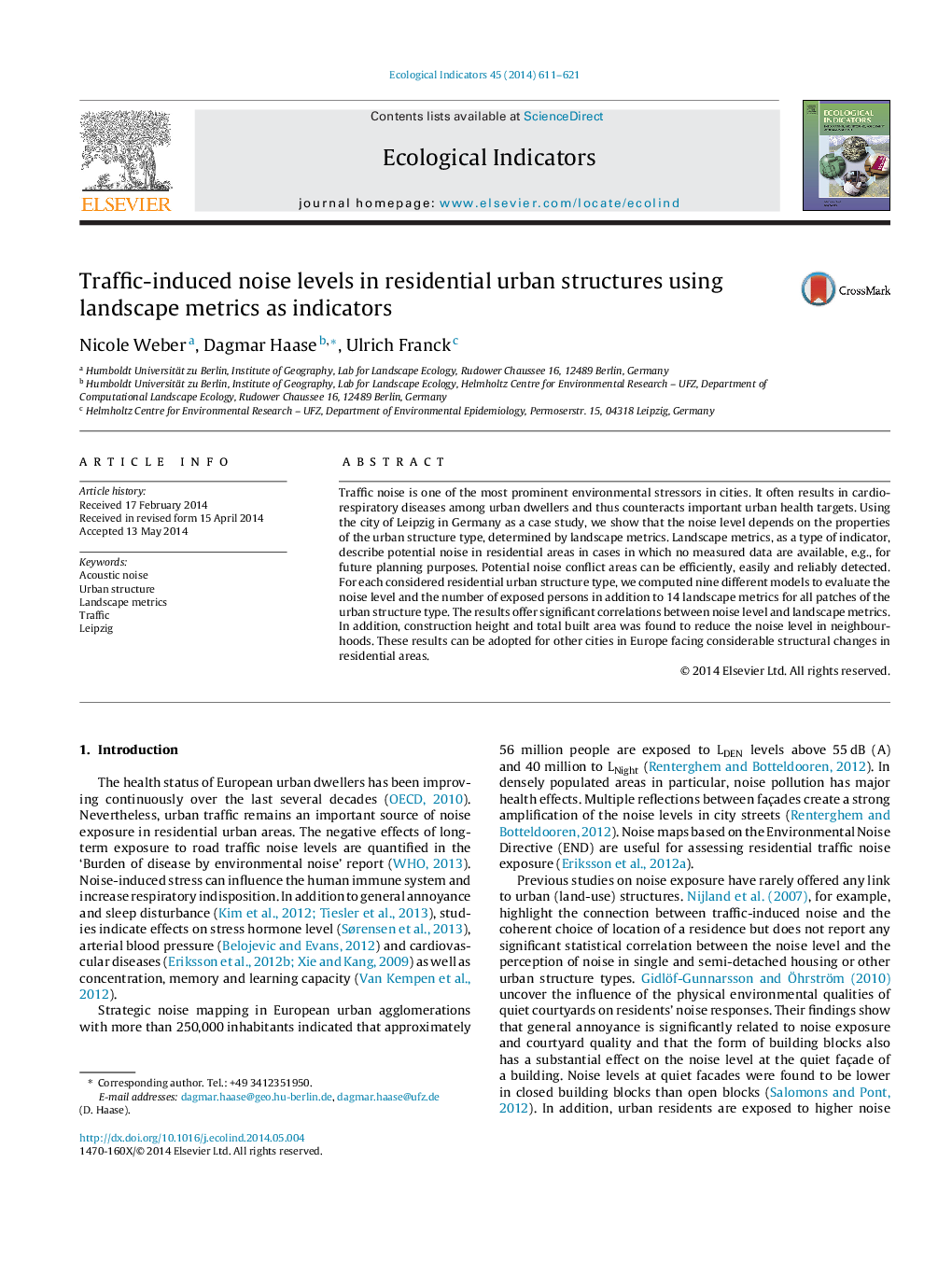| Article ID | Journal | Published Year | Pages | File Type |
|---|---|---|---|---|
| 4373103 | Ecological Indicators | 2014 | 11 Pages |
•The paper shows that the noise level depends on the properties of the urban structure type, determined by landscape metrics.•We computed nine different land use models to evaluate the noise level and the number of exposed persons.•The results offer significant correlations between noise level and landscape metrics and construction height and total built area was found to reduce the noise level in neighbourhoods.•Landscape metrics are excellent indicators describing potential noise in residential areas in cases in which no measured data are available.•Potential noise conflict areas can be efficiently, easily and reliably detected.
Traffic noise is one of the most prominent environmental stressors in cities. It often results in cardiorespiratory diseases among urban dwellers and thus counteracts important urban health targets. Using the city of Leipzig in Germany as a case study, we show that the noise level depends on the properties of the urban structure type, determined by landscape metrics. Landscape metrics, as a type of indicator, describe potential noise in residential areas in cases in which no measured data are available, e.g., for future planning purposes. Potential noise conflict areas can be efficiently, easily and reliably detected. For each considered residential urban structure type, we computed nine different models to evaluate the noise level and the number of exposed persons in addition to 14 landscape metrics for all patches of the urban structure type. The results offer significant correlations between noise level and landscape metrics. In addition, construction height and total built area was found to reduce the noise level in neighbourhoods. These results can be adopted for other cities in Europe facing considerable structural changes in residential areas.
